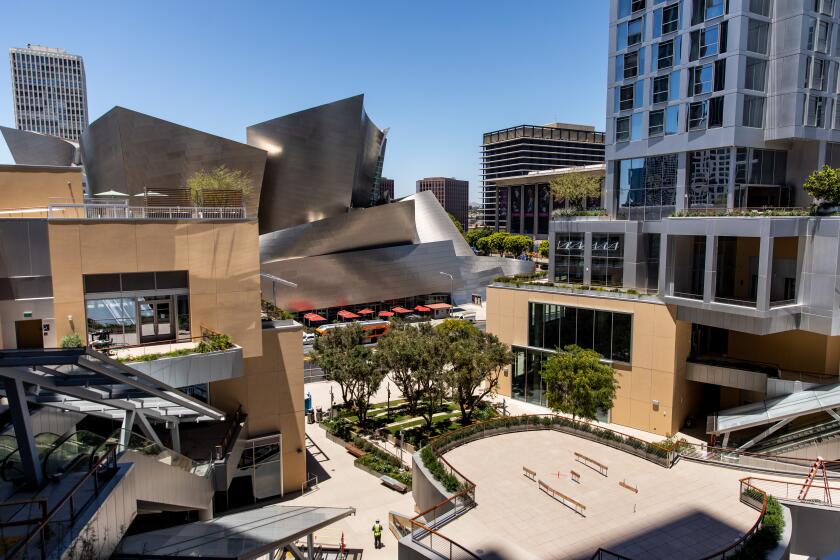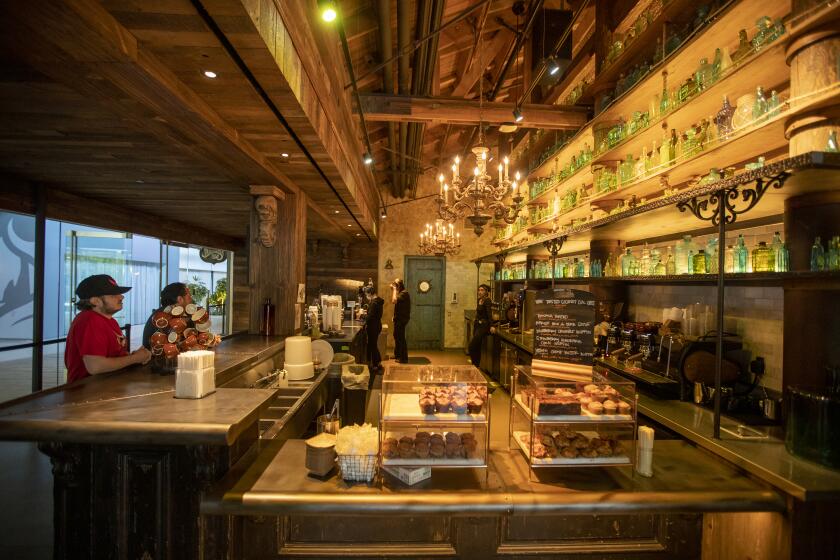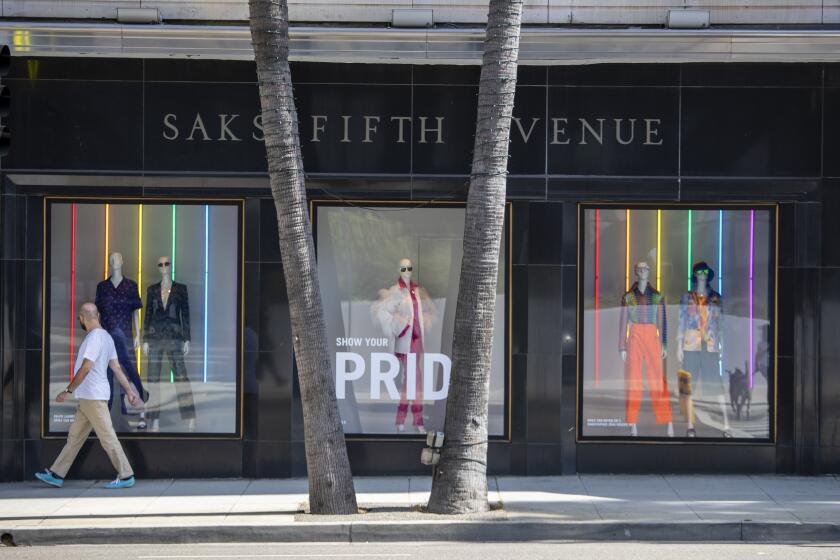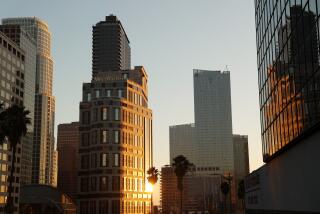More evidence that bosses want you back to work in the office despite COVID’s endless grip
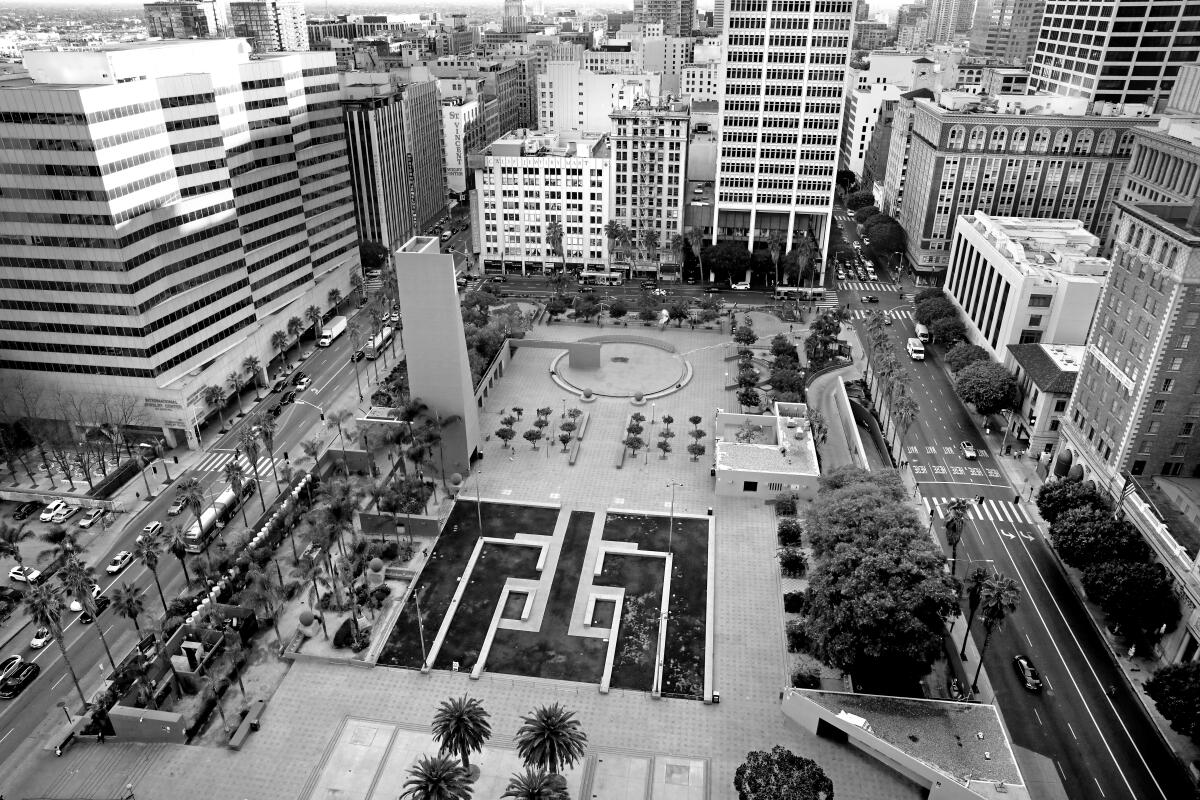
- Share via
Most bosses remain steadfast in their desire to see their white-collar employees in the office despite many workers’ desire to stay home most of the time.
About 85% of companies say they want employees to spend half or more of their work time there, according to a recent national real estate brokerage survey.
But rising and waning surges of COVID-19 keep injecting caution into employers’ attitudes about enforcing in-person work, which are still evolving as leaders and workers try to figure out how much time they want to spend in the office and how much room they’ll need to do their jobs when they are together.
Office leasing patterns in Los Angeles County in the second quarter revealed uncertainties about how working from home will change office use in the years ahead.
L.A.-area office buildings remain less than half as populated as they were before the pandemic, real estate industry observers said.
Yet some businesses are making big commitments to their offices and signing long leases for large blocks of space, according to second-quarter leasing numbers from real estate brokerage CBRE. Amazon, for instance, said in May that it will rent 200,000 square feet at the Water Garden office complex in Santa Monica to add corporate and tech jobs.
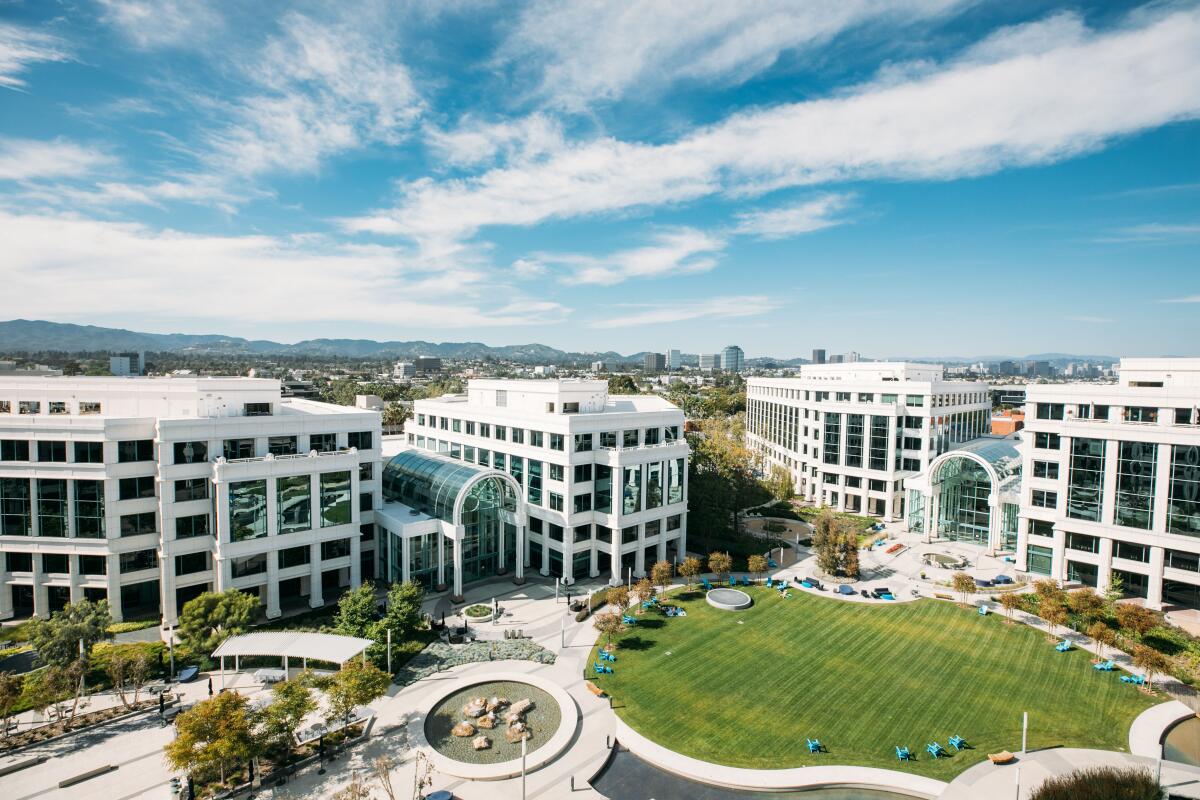
Many other employers keep paying the rent on their underused offices while pondering whether they’ll need more or less space when their leases are up. Some companies — including Netflix, Yahoo and Verizon — pay the rent but have put unneeded offices on the market for sublease, helping drive up overall vacancy to a high 25% in L.A. County, CBRE data show.
Netflix recently laid off 300 workers after reporting its first decline in subscribers in more than a decade but remains the world’s largest streamer and the largest office tenant in Hollywood.
Although people have been adapting to it for more than two years, working from home is a long way from a settled practice for employers. Most of them plan to permanently adopt some kind of hybrid model of working at home some days and in the office on others, but its form is still evolving.
“It’s really early in the ballgame,” CBRE real estate broker Jeff Pion said. “I think we’re in the second inning of this. Companies are still trying to figure out what’s best for them.”
So although 85% of companies responding to a CBRE survey said they want employees in the office at least half the time, there is little consensus about how to achieve this goal. Bosses are almost evenly split about whether the required number of days in the office should by decided by the company alone or in consultation with employees.
Economists at the brokerage predict that U.S. workers will spend an average of 3.4 days per workweek in the office, down from 4.4 days a week before the pandemic.
Officials recommend that employers take steps to reduce crowding and, if there’s a suspected outbreak, expand options for remote work.
Employees may want fewer days in the office, even if it involves a salary reduction or a new job.
Just over half of U.S. workers want to work remotely more often than they currently do, a recent survey by human resources consulting firm OperationsInc found.
Nearly half said they would even be willing to take a pay cut to increase or retain their remote work arrangements. Others plan to be proactive — 40% said they will look for a new job in the next six months so that they can work remotely more often or every day.
The June survey revealed tension around employee desires and expectations, however, as 56% acknowledged they will probably have to go to the office more frequently in the next six months, perhaps every day. Three-fourths of workers said their direct supervisor has expressed a desire to see them in person more often.
But many bosses hope that being around other people will be appealing, the way it often is in recreational settings.
“I can make coffee in my house. I can watch a movie in my house. I can watch baseball, football and basketball,” Pion said, and yet people make an effort to do those things with others. “We’re social animals.”
Improvements in technology have been gradually liberating workers from the need to be at their desks for years, but remote work forced by the pandemic accelerated the push away from assigned seating. Technology may hold keys to making the office more appealing.
Architect Frank Gehry’s latest project opens in downtown Los Angeles.
Most employers expect to increase their use of alternatives such as activity-based seating, which might entail workers with laptops and cellphones using a private room or cubicle for focused work, or staffers gathering in “huddle rooms” for group projects or setting up a laptop in a lounge or coffee bar. Some work locations may be reserved electronically.
Such configurations may require ample space, which wouldn’t reduce companies’ office footprints and rent — a goal for many.
“Hotdesking,” the practice of having employees grab an open desk when they show up, can reduce space needs, and a majority of employers expect to use it more as they settle in post-pandemic.
CBRE said 52% of its survey respondents intend to reduce their office space over the next three years, mostly to eliminate space they expect to be freed up by remote work and more efficient use. That’s up from 44% in last year’s survey.
Other firms are growing, as 39% of companies say they plan to expand their office portfolios over the next three years, mostly because of hiring and business growth. That’s up from 29% that said last year that they expected expansion.
Examples of shifts in Los Angeles County last quarter include First Republic Bank, which expanded to occupy five floors in Century City when it renewed its lease at 1888 Century Park East.
Century City and the rest of the Westside “has continued to be a very popular place for people to be,” Pion said, led by companies in entertainment and technology.
In downtown Los Angeles, which has had an oversupply of offices for decades, asset manager TCW Group agreed to a new lease that will reduce its space by more than 20% when it moves its headquarters to another building in January 2025.
“Although the space we are taking is smaller in square footage than our current space, the greatly improved use of space and design will provide for a collaborative work environment and the ability to continue to grow our business and employee numbers,” Chief Operating Officer Liz Kraninger said in a memo to employees, according to real estate data provider CoStar.
Esports giant Riot Games has grown into one of the region’s largest office tenants as the video game industry evolves into a major economic player.
Downtown offices across the country were hit particularly hard by the pandemic, as people avoided high-rises and the public transportation they rode to work.
The pace of returning workers grew in June, according to the most recent pedestrian traffic report by tracking service Springboard. Cameras in big cities picked up more people walking around, which Springboard said appears to be a consequence of more people returning to the office.
Weekday pedestrian traffic in U.S. downtowns strengthened in June to 26% below the pre-pandemic level of 2019, compared with 42% below that mark in January, Springboard reported.
“The gap between now and 2019 has narrowed quite a lot,” said Diane Wehrle, Springboard’s director of marketing and insights.
The daytime bounce-back is most pronounced during breakfast and lunch hours, indicating that the shift back to the office has accelerated, Springboard said.
The company, which is based near London, does not publicly break out individual cities, but Los Angeles traffic follows U.S. norms, Wehrle said.
Saks Fifth Avenue, one of Beverly Hills’ most famous department stores, is set to move to make way for a mixed-use complex that could energize a sedate stretch of Wilshire Boulevard near Rodeo Drive.
Downtown office landlord Christopher Rising of Rising Realty Partners said his buildings on Bunker Hill are more than 50% populated Tuesday through Thursday, the most popular days for in-office labor.
Downtown “has been through a tough couple of years,” Rising said, but it stands to benefit from an influx of residents coming to billions of dollars’ worth of residential projects completed in recent years, including the $1-billion Grand LA complex and the planned $1.6-billion Angels Landing project.
According to Kastle Systems, which provides key-card entry systems used by many companies and tracks patterns of workers’ card swipes, the average U.S. office population hit a low of 14.6% in mid-April 2020. Last week it was at 44.1%, about the same as at the end of June. Los Angeles was below average at 41.8%.
Vacancy in Class A Los Angeles County office buildings (not including sublease space) was 17.5% in the second quarter, slightly lower than it was both a year earlier and in the first quarter. Landlords’ average monthly asking rents of $3.88 per square foot also changed little from the previous periods.
Tenants have the upper hand in rent negotiations, real estate brokerage Savills said, even though the Los Angeles regional economy has fully reopened since the pandemic started and the labor market is historically tight.
“While these strong underlying fundamentals would normally result in higher leasing activity and decreasing availability,” Savills said, “the continued widespread adoption of hybrid workplace strategies and the return of uncertainty in the overall economy will keep the Los Angeles office market tenant-favorable for the foreseeable future.”

